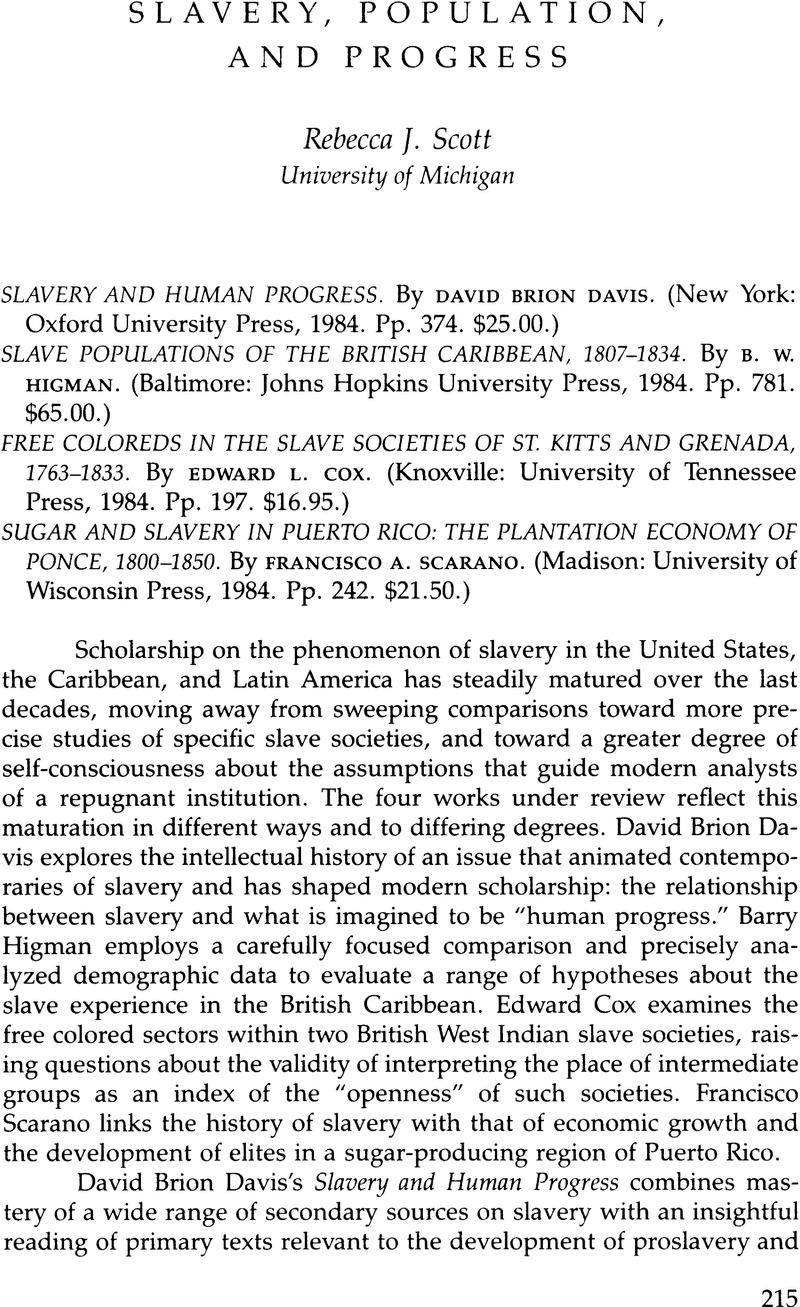No CrossRef data available.
Published online by Cambridge University Press: 12 October 2022

1. The observation that the antithesis of slavery may not be autonomy, but rather “embeddedness,” reflects a definition of slavery not simply as a relationship that involves the holding of property in men and women, but as one that entails “natal alienation” and defines its victims as outsiders. Differing versions of this view have been developed more fully by Orlando Patterson and Moses Finley. See Orlando Patterson, Slavery and Social Death: A Comparative Study (Cambridge, Mass.: Harvard University Press, 1982), especially pp. 1–34; and Moses I. Finley, s.v. “slavery,” in Encyclopedia of the Social Sciences, edited by David L. Sills (New York: Macmillan and Free Press, 1968), 14:307–13. In this and other works, Finley questions the universality of an antithesis between slavery and freedom. See his “Between Slavery and Freedom,” Comparative Studies in Society and History 5 (1962–63):233–49.
2. The classic earlier works are Davis's The Problem of Slavery in Western Culture (Ithaca: Cornell University Press, 1966), and The Problem of Slavery in the Age of Revolution, 1770–1823 (Ithaca: Cornell University Press, 1975).
3. For a perceptive discussion of this issue, see Thomas C. Holt, “‘An Empire over the Mind’: Emancipation, Race, and Ideology in the British West Indies and the American South,” in Region, Race, and Reconstruction: Essays in Hoitor of C. Vann Woodward, edited by J. Morgan Kousser and James M. McPherson (New York: Oxford University Press, 1982). 4. See Howard Temperley, “Capitalism, Slavery, and Ideology,” Past and Present 75 (May 1977):94–118.
5. See Rebecca J. Scott, Slave Emancipation in Cuba: The Transition to Free Labor, 1860–1899 (Princeton, N.J.: Princeton University Press, 1985).
6. Manuel Moreno Fraginals makes a similar point concerning the particular exigencies of labor in mechanized and semimechanized sugar mills, although he does not characterize the result as efficiency. In his memorable phrase, “A new world is created which adds to the barbarism of slavery the civilized torments of overwork.” See Manuel Moreno Fraginals, The Sugarmill: The Socioeconomic Complex of Sugar in Cuba, 1760–1860, translated by Cedric Belfrage (New York: Monthly Review Press, 1976), p. 18. See also Manuel Moreno Fraginals, El ingenio: complejo económico social cubano del azúcar, 3 vols. (Havana: Editorial de Ciencias Sociales, 1978), especially vol. 2.
7. On this point, Scarano's work nicely complements that of Laird Bergad on coffee, in which a similar argument is made about the role of immigrant entrepreneurs. See Laird W. Bergad, Coffee and the Growth of Agrarian Capitalism in Nineteenth-Century Puerto Rico (Princeton, N.J.: Princeton University Press, 1983).